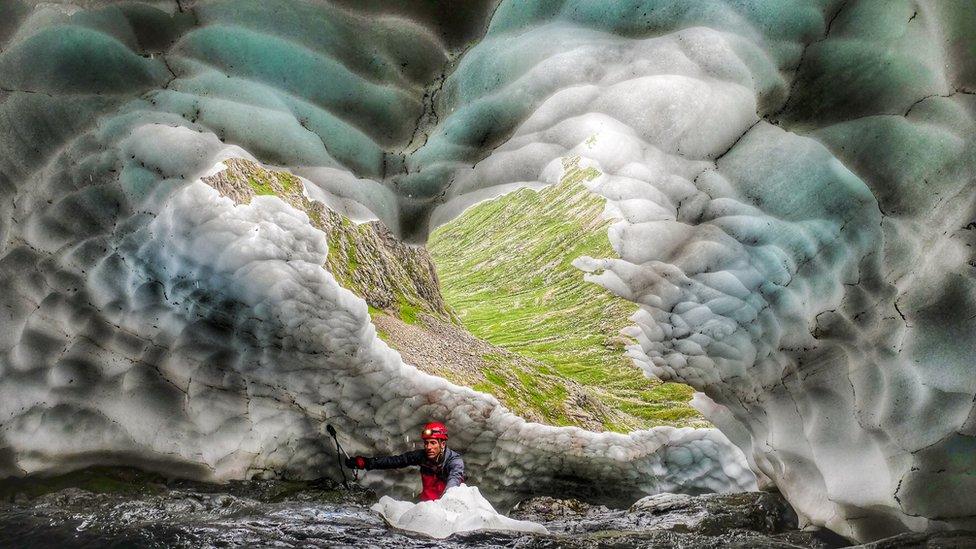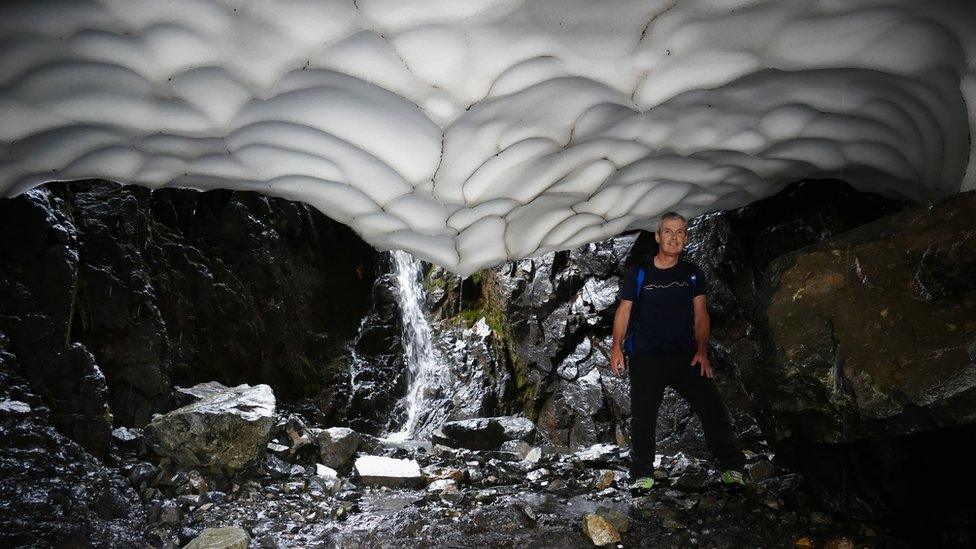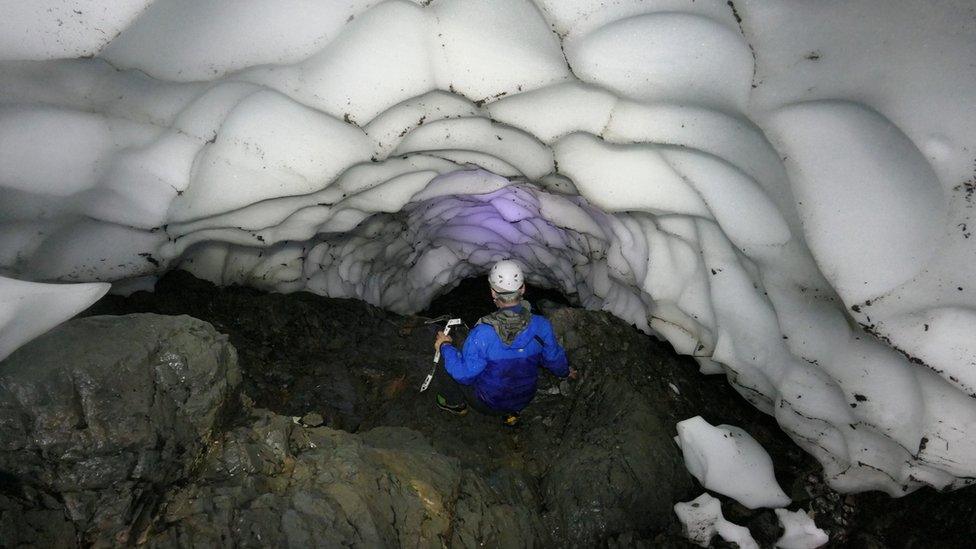Stunning 'snow tunnels' caught on camera
- Published

The 'tunnels' are initially caused by flowing water and expanded by wind blowing through
Two snow enthusiasts have captured stunning photographs from inside a 'snow tunnel' on Ben Nevis.
Iain Cameron, from Stirling, spends his spare time monitoring snow levels in Scotland from one winter to the next, and has spent the past 22 years travelling the country in pursuit of his curious hobby.
While walking on Scotland's highest mountain with fellow amateur researcher Alistair Todd in July, the pair happened upon an unusual natural phenomenon - a snow tunnel.
"They are caused by water which burrows through the snow drift initially, creating a little tunnel," Mr Cameron said.
"Then wind begins to blow through the space and starts to expand the tunnel.
"They begin as a couple of feet wide and get larger as the warmer air begins to eat away at the snow and melt it."
He added: "The further into summer we get, the bigger the tunnels get. You're eventually able to walk through them, like I did in these photographs."
The tunnels are not a new discovery, but Mr Cameron said they only occur in specific areas where snow lasts into the summer months.

Mr Cameron said it can be "a little disconcerting" to walk below tons of snow
He said: "There are very few places in Scotland you get these tunnels, but they tend to form in the same places pretty much every year and at the same time."
"We don't actively look for the tunnels, they're just a bonus."
Despite Mr Cameron's snow-exploring experience, he still gets a little anxious.
"It's very weird to think that there are hundreds or even thousands of tons of snow above your head. It can be quite disconcerting but we're very sensible and take precautions," he said.
"It's a surreal experience, being inside the tunnels. Some of them are completely jaw-dropping."
He plans to return to Ben Nevis in August when he said he expected the tunnels to be "even bigger and better".

The tunnels begin to melt and eventually collapse later in the year
As summer turns to autumn, the tunnels continue to expand before finally collapsing.
Mr Cameron said: "After August, the tunnels will eventually become 'bridges' as they continue to expand. The snow is being melted from below, by the wind, and also from above, from the sunlight.
"The snow gets thinner and thinner and eventually collapses, and melts."
When snowfall begins again later in the year, the cycle is reborn.

Mr Cameron has dedicated years of his free time to monitoring snow levels in Scotland
Mr Cameron's research involves monitoring patches of snow across the country, taking pictures and measuring them.
His findings are then put into reports which are published by the Royal Meteorological Society.
Last year, he recorded the most surviving patches of snow in more than 20 years, but Mr Cameron insists he is no expert.
"I do this in my own time - I have a day job. I'm an amateur, not an academic."
- Published27 November 2015
